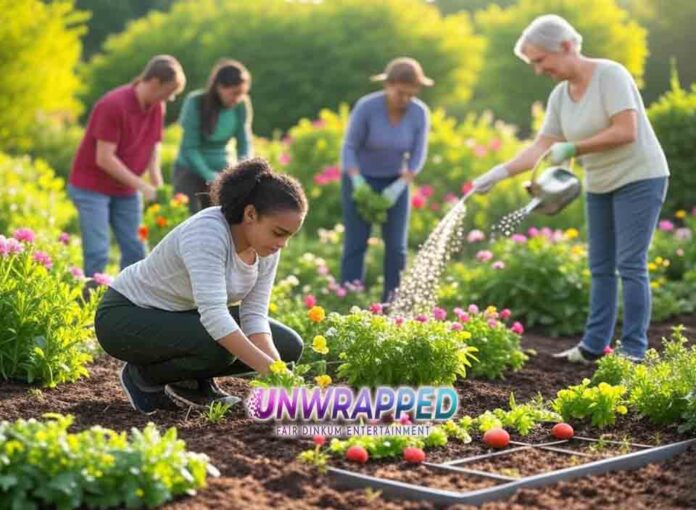Gardening is more than just a hobby; it’s a way to connect with nature, boost your mental health, and create something beautiful or edible from the soil. Whether you’re dreaming of a vegetable patch, a flower-filled oasis, or a few low-maintenance houseplants, this guide will walk you through everything you need to know to get started and succeed. Let’s dig in!
Why Gardening is Worth Your Time
Gardening offers benefits that go beyond aesthetics. Here’s why you should consider picking up a spade:
- Stress Relief: Gardening has been shown to reduce stress and promote relaxation.
- Physical Activity: It’s a great way to stay active without hitting the gym.
- Fresh Produce: Grow your own fruits and vegetables for healthier eating.
- Eco-Friendly: Create a habitat for pollinators and reduce your carbon footprint.
- Creative Expression: Design your garden to reflect your personality and style.
No matter your goals, gardening is a rewarding and versatile activity.
Quick Start: Gardening Essentials
If you’re a beginner, start with these simple steps:
- Choose Your Space: Balcony, backyard, or windowsill—every space can host a garden.
- Pick Your Plants: Start with easy-to-grow options like herbs, lettuce, or marigolds.
- Gather Basic Tools: You’ll need gloves, a trowel, pruning shears, and a watering can.
- Prepare the Soil: Good soil is the foundation of any successful garden.
- Water Smartly: Learn when and how much to water based on your plants’ needs.
These basics will get you on the path to gardening success. Let’s explore each step in more detail.
Planning Your Garden
1. Decide What to Grow
Think about your goals. Are you growing food, flowers, or both?
- Vegetable Garden: Tomatoes, cucumbers, and peppers are beginner-friendly.
- Herb Garden: Basil, mint, and parsley thrive in small spaces.
- Flower Garden: Sunflowers, zinnias, and pansies add color and charm.
2. Understand Your Climate
Research your hardiness zone to determine what grows best in your area. Planting at the right time of year is crucial.
3. Design Your Layout
Sketch out your garden to maximize sunlight and space. Group plants with similar water and sunlight needs together.
Getting Your Hands Dirty: Soil and Planting
1. Test and Improve Your Soil
Healthy soil equals healthy plants. Use a soil test kit to check for:
- pH level
- Nutrient content
- Drainage
Add compost or organic matter to enrich your soil and improve its structure.
2. Planting Basics
- Seedlings: Dig a hole twice as wide as the root ball.
- Seeds: Follow the depth and spacing guidelines on the packet.
- Spacing: Give your plants room to grow without overcrowding.
3. Mulch for Success
Add a layer of mulch to:
- Retain moisture.
- Suppress weeds.
- Regulate soil temperature.
Nurturing Your Garden
1. Water Wisely
- Water early in the morning to reduce evaporation.
- Check the soil moisture before watering—overwatering can be as harmful as underwatering.
2. Feed Your Plants
Use fertilizers sparingly and opt for organic options when possible. Over-fertilizing can harm your plants and the environment.
3. Prune Regularly
- Remove dead or diseased leaves.
- Pinch off flower buds to encourage growth in some plants.
- Prune shrubs and trees to maintain their shape.
Dealing with Pests and Problems
1. Preventing Pests
- Use companion planting to repel harmful insects.
- Keep your garden clean of debris where pests can hide.
- Encourage natural predators like ladybugs and birds.
2. Common Issues
- Yellow Leaves: Often a sign of overwatering or nutrient deficiency.
- Wilting Plants: Could indicate underwatering or root rot.
- Holes in Leaves: Check for caterpillars or slugs.
3. Natural Remedies
- Use neem oil for pests.
- Sprinkle crushed eggshells to deter slugs.
- Create homemade sprays with soap and water for aphids.
Seasonal Gardening Tips
Spring
- Start planting cool-weather crops like spinach and kale.
- Prune trees and shrubs to promote growth.
Summer
- Water deeply to combat heat.
- Harvest vegetables regularly to encourage production.
Fall
- Plant bulbs for spring flowers.
- Add compost to prepare soil for winter.
Winter
- Protect perennials with mulch.
- Plan next year’s garden and order seeds.
Fun Gardening Projects
- DIY Vertical Garden: Perfect for small spaces.
- Butterfly Garden: Plant milkweed and other pollinator-friendly flowers.
- Fairy Garden: Create a whimsical miniature world with plants and decorations.
- Composting: Turn kitchen scraps into nutrient-rich soil.
Final Thoughts: The Joy of Gardening
Gardening is a journey, not a destination. It’s about experimenting, learning, and finding joy in the process. Even if you start small, the rewards are enormous—fresh air, delicious produce, vibrant flowers, and a sense of accomplishment.
So grab your gloves, pick a project, and let your green thumb flourish. Happy gardening!
See Also: How to Love Your Home: The Ultimate Guide to Creating Your Dream Space









